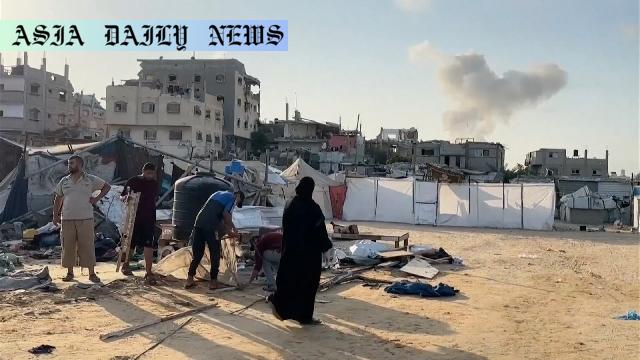Hamas response is anticipated on a US proposal for a 60-day ceasefire, exchanging hostages and bodies for a chance at peace talks.
Hamas is reviewing a US-proposed 60-day ceasefire in Gaza.
The ceasefire offers hostages’ release and returned bodies.
Observers anticipate Hamas’s guarantee for permanent peace.

US Proposal for a 60-Day Gaza Ceasefire: Key Developments
The escalating conflict in Gaza has attracted significant international attention, with recent efforts led by the United States to broker a 60-day ceasefire. This proposal serves as a critical step towards de-escalating the ongoing hostilities between Hamas and Israel. Reports indicate that the ceasefire terms include the release of 10 live hostages and the phased return of 18 bodies from Hamas back to Israel. Additionally, the truce is also expected to initiate indirect talks aimed at securing a lasting resolution to the conflict.
US President Donald Trump has confirmed that he is awaiting Hamas’s response, which is anticipated within the next 24 hours. The proposal, reportedly already accepted by Israel, is seen as a promising pathway to reduce the humanitarian toll in Gaza while easing tensions in the region. A Saudi media outlet also suggests that Hamas is leaning towards accepting the deal, driven by new factors such as improved aid flow into Gaza and an Israeli withdrawal.
Hamas’s Considerations and Internal Challenges
For Hamas, accepting the ceasefire carries significant implications. The group has indicated interest in securing guarantees that the truce will lead to a permanent end to the hostilities, a critical concern given Israel’s stated goal of dismantling the organization. Observers note that these guarantees could influence Hamas’s decision, as the organization seeks assurances that it would not be subjected to further aggression post-ceasefire.
Internal dynamics also play a role, as Hamas needs to balance its political goals with the demands of its constituents in Gaza, who continue to bear the brunt of the conflict. Accepting the deal could pave the way for increased international engagement and aid, potentially alleviating some of the suffering within Gaza.
Potential Long-term Implications of a Ceasefire
If accepted, the 60-day ceasefire could serve as a starting point for broader peace negotiations. A successful truce might create an environment conducive to dialogue, allowing both sides to address longstanding grievances and work towards a sustainable solution. However, the challenges are considerable, as the past is marked by numerous ceasefires that ultimately failed to produce lasting peace.
The role of the international community will be pivotal in this process. Ensuring compliance from both sides and facilitating trust-building measures will require significant diplomatic efforts. The inclusion of hostages and returned bodies as part of the deal highlights the complex and sensitive nature of such negotiations.



Commentary
The Promise and Challenges of the Proposed Ceasefire
The latest developments surrounding the US-proposed 60-day ceasefire in Gaza mark a significant moment in what has been a protracted and heartbreaking conflict. If successful, this agreement could provide much-needed relief to the people of Gaza, who have endured immense suffering. For Hamas and Israel, the deal offers a chance to step back from the brink and explore opportunities for peace.
However, this is no simple task. The mistrust between the two sides, coupled with years of intense hostilities, poses substantial obstacles to achieving a meaningful ceasefire. Hamas’s insistence on guarantees that the truce will lead to a permanent end to hostilities is understandable, given Israel’s stated objective of dismantling the organization. These guarantees will need to be credible and actionable to build confidence in the process.
The Role of International Mediation
Another critical aspect lies in the role of international mediators like the United States and regional players such as Saudi Arabia. Their ability to facilitate dialogue, ensure compliance, and address immediate humanitarian concerns without aggravating tensions will be crucial. The inclusion of hostages and returned bodies as part of the truce package adds layers of emotional and political complexity, emphasizing the sensitivity required in these negotiations.
Looking Ahead: A Hope for Sustainable Peace
While the proposed ceasefire is a step in the right direction, it is essential to temper expectations. History has shown that ceasefires often serve as temporary pauses rather than long-term solutions. Yet, this moment also represents an opportunity—a chance to reduce suffering, rebuild trust, and, perhaps, set the stage for more comprehensive peace talks. The next few days will be critical in determining whether this opportunity can be seized and translated into lasting change.